For Semana Santa, Los Cinco Amigos (plus Sharaldine’s sister!) decided to spend the long weekend in Chile, just a bus ride over the Andes and into Santiago. Warning: this is going to be a very long post.
The planning started weeks before, when we all bought the tickets for an overnight bus after our classes on Wednesday. When the day arrived, we couldn’t believe that we’d be adding yet another country to our list, one which was rich with culture and history for us to explore in the short time we had.
Unfortunately, everything did not go smoothly for the team. We left the bus terminal in Mendoza at 10pm, expecting to arrive in Santiago at 5 the following morning. Two hours into the trip, the bus broke down– something about the belt– and we were stuck on the side of the road, in the middle of the Andes, for 4 1/2 hours. I slept through most of it, but it seriously through us off of schedule. When everything was finally fixed, we moved on to the border, which for some reason was very backed up.
We arrived at immigration at 5:30 that morning, and were not allowed to pass through until 11:15. For almost 6 hours we sat and waited and, at one point, were asked by the bus drivers to protest the border control guards to let us through. Eventually, to the cheers of all those still waiting at the border, we continued on our trip.
At 2:15, we got to the Santiago bus terminal– one person remarking “llegamos vivo!” (We got her alive!) We were immediately greeted by very friendly taxi drivers who lead us to their cabs. Seven hours late, all we wanted to do was get to our apartment and figure out what to do from there. The cab drivers gave us an informal tour, and then charged us an incredible amount, but having only just arrived and still a little bit confused about the exchange rate, we paid without questioning it.
We stayed just outside of the center, in a great apartment found using Airbnb (check it out!) Not wanting to waste anymore time, we quickly figured out the metro system and were off to the center of the city. The metro was simple and quick, with only a few lines that overlapped to create a network you could take to any part of the city.
First, we decided to find La Piojera (flea), a famous bar once frequented by poets and presidents, known for the typical Chilean drink the Terremoto (earthquake). La Piojera was a complete dive, but only more charming because of it. The central rooms were packed with locals drinking Escudo beer or Terremotos. We sat off to the side to observe and take a breath. We ordered terremotos, a mix of wine and ice cream, which can be “gut-wrenching”, so is served with a whole bunch of bread and the wait staff recommends the bife a lo pobre, beef with french fries and fried eggs.
From here, we ventured towards Bellavista, a barrio just across the Río Mapocho. On the way there, we stopped for empanadas and italianos, hot dogs topped with avocado, mayonnaise, and tomatoes. We also stopped in some consignment shops to try on some hip used clothes.
Bellavista is known for its hip bars and great street art. While we did see some pretty cool murals, it was getting dark and we were fading fast. We decided to head home, but not before wandering through an open air market.
Friday, we got up early to take advantage of all Santiago had to offer, or as much of it as we could get to. We started with a quick breakfast at the gas station across the street from our apartment, and then took the subway to the city center. By 11, we were at the base of Cerro San Crístobal, a hill in the center of the city’s largest park, Parque Metropolitano.
To get up the hill, you can hike the winding street walk, or taking the funiculares, the cable cars that carried you nearly to the summit. We decided to go by funicular. The ascent gave us a partial view of the city below, but the hill was topped by a touristy plaza that displayed a vista of the whole city. From the plaza, we walked up a couple hundred meters to the Blessed Virgin Mary statue, which overlooked an amphitheater. To save money, we walked down the mountain, which took much longer than we thought it would.
For lunch, we went to La Caramoña, located near the base of the hill. We tried more typical Chilean foods, pastel de choclo (corn-meal casserole) and borgoña (Chilean-style sangria).
Our next destination was La Chascona, one of the infamous poet Pablo Neruda’s three Chilean houses. I was incredibly jazzed about this spot. I started reading Neruda in my high school Spanish classes, as its nearly impossible to talk about Latin American literature without at least mentioning Neruda. He has been regarded as one of the most important Spanish language literary figures, and the most important of the 21st century, according to Gabriel García Márquez. My grandmother gave me a collection of his poetry, Odes to Common Things. My favorite in this collection is Oda a unas flores amarillas (Ode to Some Yellow Flowers).
La Chascona was a spectacular house built originally as a hide away for his lover and then third wife, Matilde Urrutia. It was named for her, chascona as a nickname for a person with wild and unkempt hair. The house was decorated and designed to suit Neruda’s quirks, filled to the brim with relics from his travels.
There are pieces done by Hector Herrera, María Martner, and Piero Fornasetti all over the house. Neruda was a diplomat in Buenos Aires and Madrid, making some literary and artistic acquaintances everywhere he went. He lived amidst the throes of the Spanish Civil War, and became a special consul for foreign emigrants in Paris (thanks, Wikipedia). The point of all this information is that, besides being a writer, Neruda was heavily involved in foreign politics and was well-known worldwide. Also, he was best friends with Pablo Picasso.
Neruda wrote his Disposiciones illustrating his want to be buried at Isla Negra, his home on the water outside of Valparaiso. Unfortunately, Chile was undergoing a drastic political upheaval lead by the CIA-backed Augusto Pinochet. Matilde had her husband buried in the public cemetery in Santiago, and his funeral was the first mass demonstration against the government of Pinochet. The military was systematically destroying the city, and all those who opposed Pinochet, like Neruda. His house was attacked, flooded, and papers and documents were destroyed. By holding a wake at La Chascona, Matilde was able to demonstrate all the damage Pinochet had done. Luckily, many of the papers were saved and La Chascona was restored. Matilde finished out her years in La Chascona, protecting it from the Pinochet regime. Neruda’s body was later moved to La Isla Negra, where he wanted to be. “Compañeros, bury me at the Isla Negra, in front of the sea that I know, in each coarse spot of stones and waves that my lost eyes will not return to see”.
Perfect segue: from La Chascona, we went to the Museo de la Memoria y los Derechos Humanos, the national museum commemorating the horrifying atrocities that took place in the 70s and 80s in Chile and much of South America (including Argentina). On September 11, 1973, the democratically-elected government was overthrown and the president, Salvador Allende, was killed when the government center, La Moneda, was bombed. This coup d’etat was backed by the CIA, who at this point in the Cold War, were terrified of any communist threats. Though democratically-elected, Allende was a marxist leader. The CIA named Augusto Pinochet president, and thus began period of the desaparecidos and Operation Condor.
Operation Condor was a further step taken in South America to rid the continent of communist supporters. The governments tracked down these supporters, typically between the ages of 20 and 30, put them in internment camps, tortured, and “disappeared” them. Many of “los desaparecidos” have still not been located. (In Argentina, the Mothers of the Plaza de Mayo march every Thursday to urge the government to take ownership of the crimes and terrorism it inflicted upon its own citizens.) In 1989, Pinochet was removed from power, but never faced trial for his war crimes. As heavy as everything in this museum was, it felt like an invitation that Chile was now offering to come and see where the country has been, to understand its history and to know that it will not be repeated.
Exhausted, Sarah and I headed back to the apartment while the other four went to check out La Moneda. Sharaldine, a History and Latin American Studies major, mostly interested in the Cold War era, was fascinated by Santiago’s history, and wanted to see the capital building. Sharaldine also acted as our tour guide through the Museo de la Memoria, so thanks Sharaldine!
Our last full day in Chile was spent on the Pacific, in the beautiful, rickety, coastal town of Valparaíso. We were originally told by some very debby downer cab drivers that we would never get a bus to Valpo, that it’s just way to busy on Semana Santa weekend, and we should really just stay in Santiago. Luckily, we didn’t listen to them, and bought six roundtrip tickets to one of the coolest places.
Valparaiso is nestled between the mountains and the ocean. Neruda once said “Valparaiso, how absurd you are… You haven’t combed your hair, you’ve never had time to get dressed, life has always surprised you.” Valparaiso has a feel of being quickly thrown together, with dilapidated buildings and tiny winding streets. There are dozens of hills throughout the city, houses precariously stacked up the sides, and collapsing ascensores carrying passengers up to the top.
We walked from the bus terminal into the city center, where we got an early lunch at Empanadas Famosas. It was a ramshackly crowded little restaurant where most people were asking for empanadas “para llevar” instead of eating at the premises. We also ordered ours to go, deciding to walk along the water while enjoying our treats.
We found our way from the water up the Cerro Concepción and Cerro Alegre, two of the most famous hills in Valparaiso, covered in impressive street art. We had wanted to take the ascensor, but somehow missed it and wound up at the top of the hill.
Exhausted from all the walking we had been doing, we stopped at a small restaurant near Paseo Yugoslavo, which had ridiculously slow service but gave us free lemon pie. So I’ll count that as a win. Our next stop was, you guessed it! Pablo Neruda’s Valparaiso house, La Sebastiana! It was named for the Spanish architect, Sebastian Collado. (Here’s an ode to La Sebastiana.)
This house is five stories high and was built to evoke a ship-like feeling. Neruda called himself a sea captain on land, and his appreciation of the ocean was clearly noted. Each floor opened up to the water, with windows across the entire northern wall. This expansive house was used to entertain guests, one of Neruda’s favorite past times. From all these house tours, it became clear that Neruda was a slightly self-centered man with an eclectic sense of style and humor. He would often show up to dinner parties in disguise, and would concoct his famous “Coquetelón” cocktail for his guests.
I somehow ended up with two books from the two houses, the classic Veinte poemas de amor y una canción desesperada, and the clever and curious Algunas preguntas.
It was already getting pretty late by this point, so we returned to the Cerro Concepción and had dinner at the Restobar, eating fish dishes and ñoquí (that’s how they phonetically spell gnocchi here). It was paired with Chilean red wines and desserts.
On Sunday, we returned home to Mendoza, leaving the terminal at noon. We had some minor problems getting to the terminal, nobody in Santiago actually knows what Terminal O’Higgins is even though it is indeed called Terminal O’Higgins. Luckily, we left the apartment with plenty of time and even got to the terminal early. Our bus wasn’t running, but a very helpful women just changed our seat numbers and put us on another bus. Immigration took only an house and a half this time, and we got back to Mendoza 20 minutes early! I couldn’t believe it. After our trip to Santiago, I was sure we would face problems on our bus ride home.
I feel perfectly exhausted now, and am ready to return to my life in Mendoza. In two weeks, we’re heading to Buenos Aires to spend the weekend in the capital.
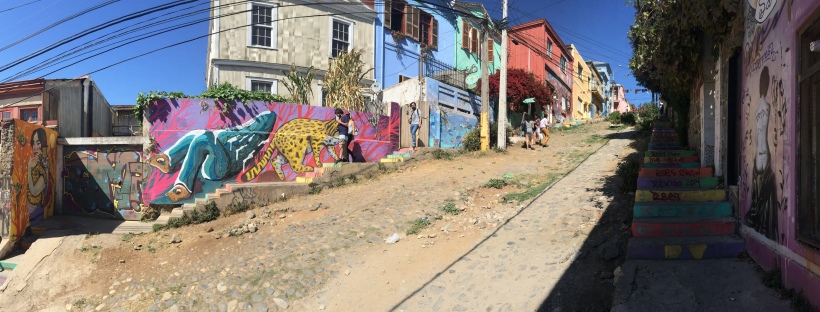
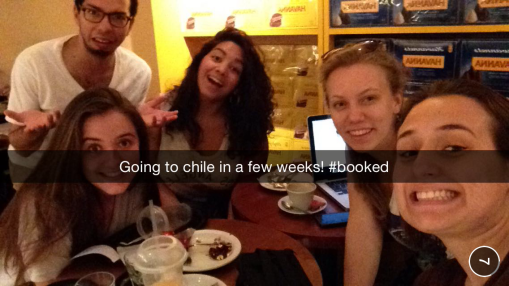
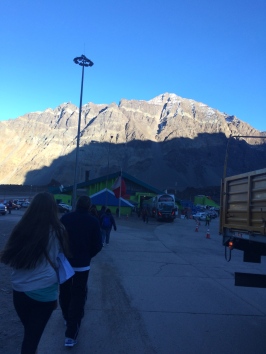
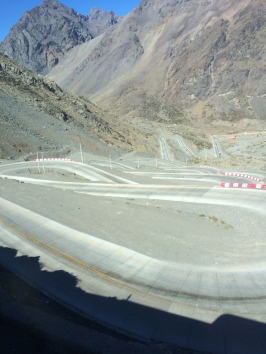
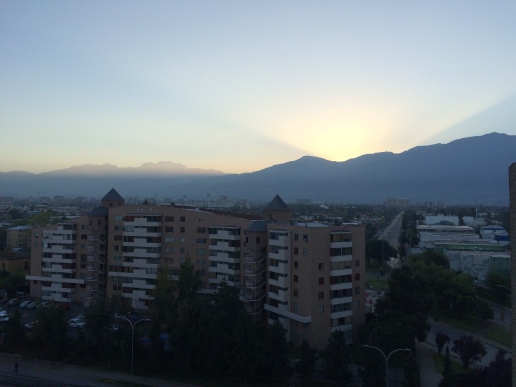
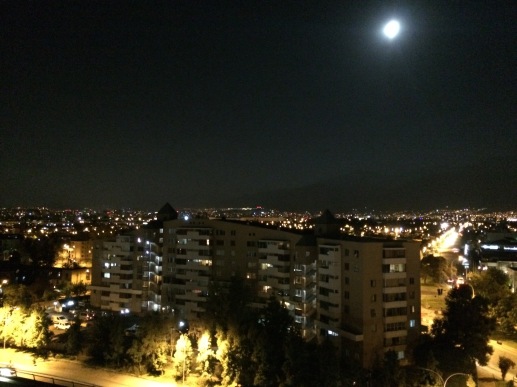
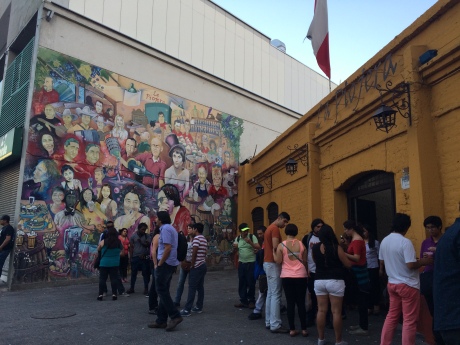
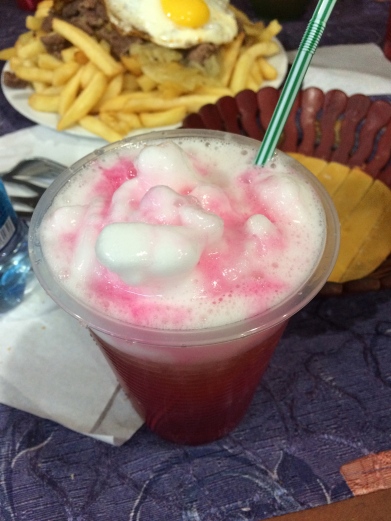
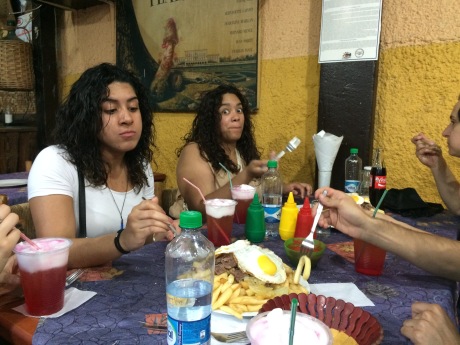
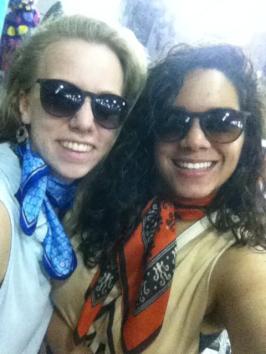
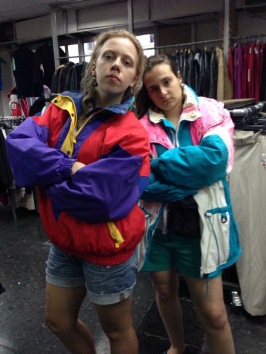
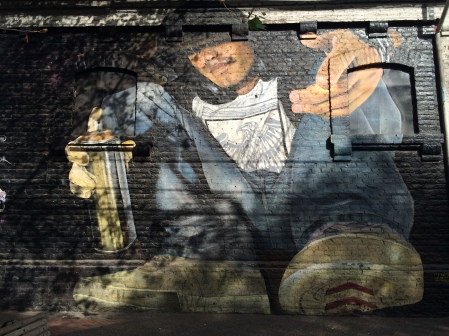
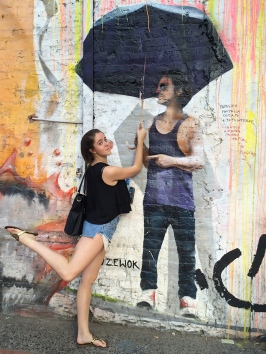
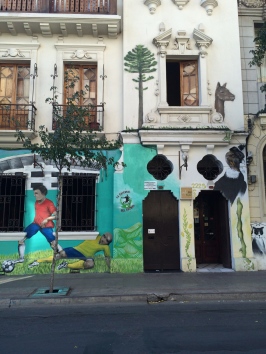
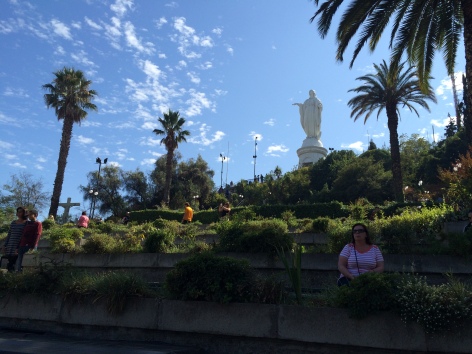

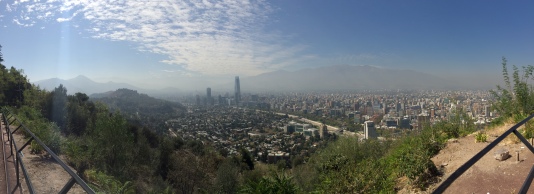
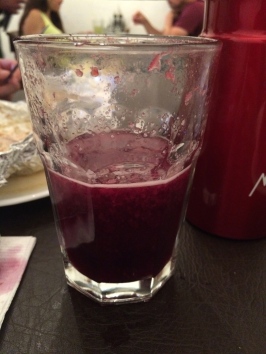
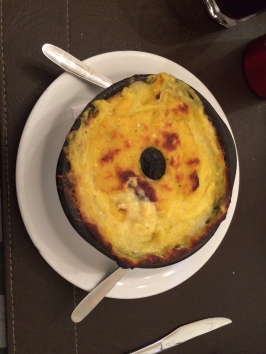
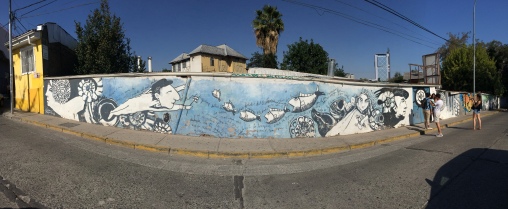

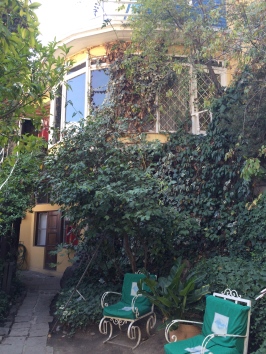
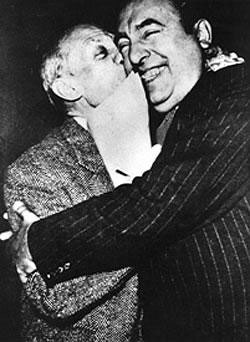
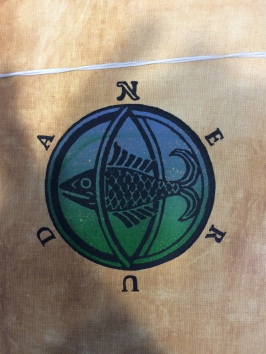
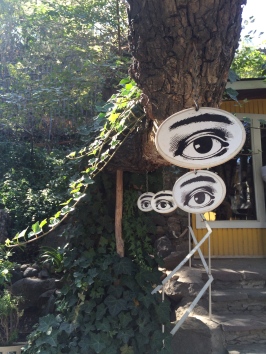
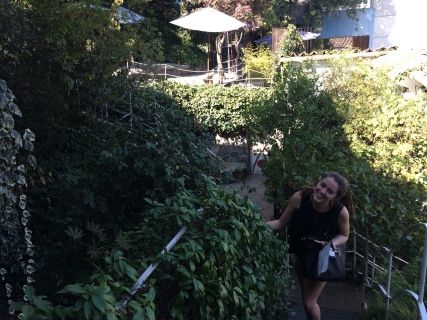


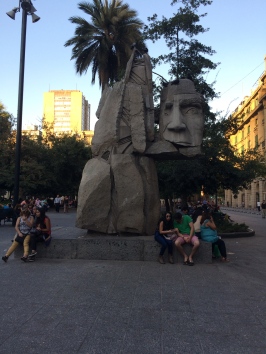

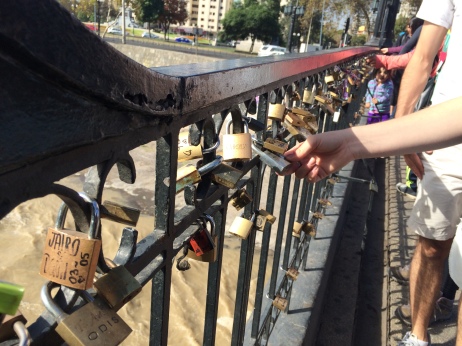
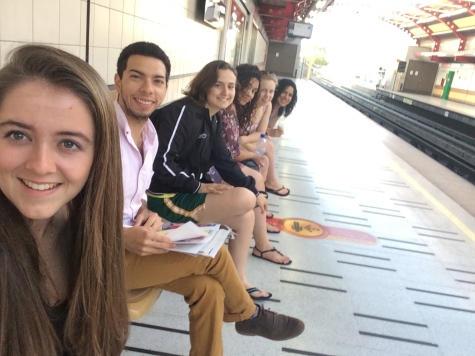

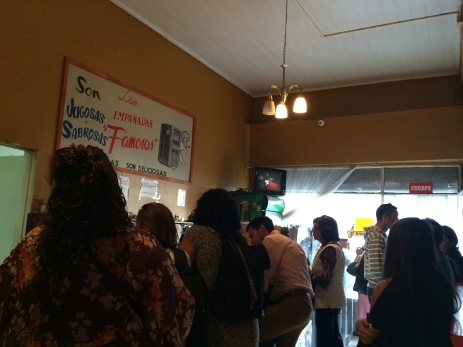
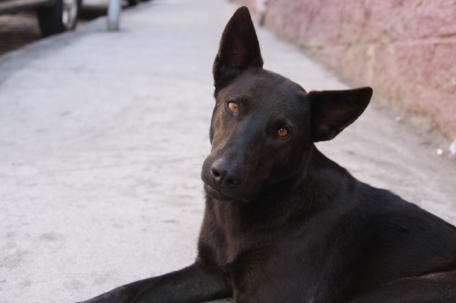
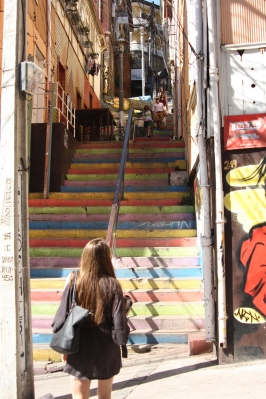
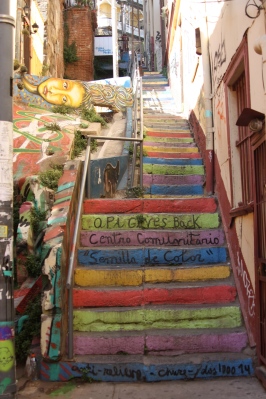
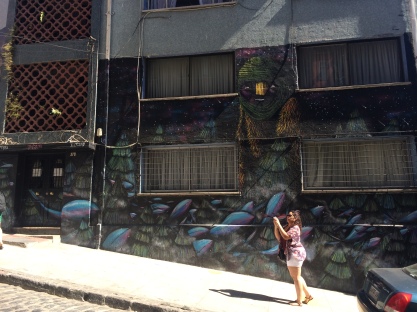
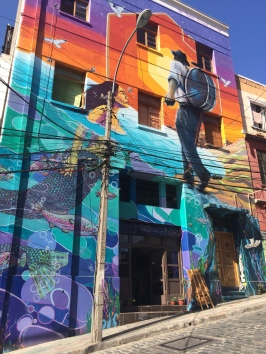
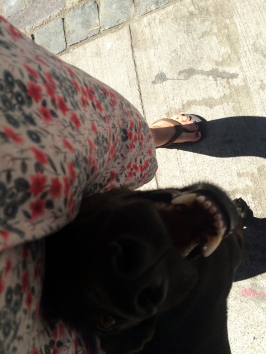
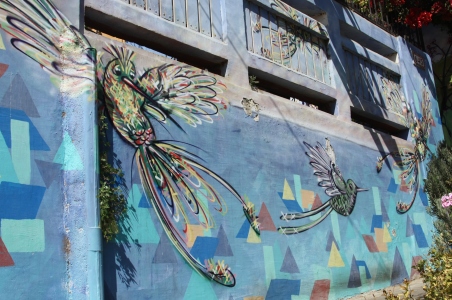
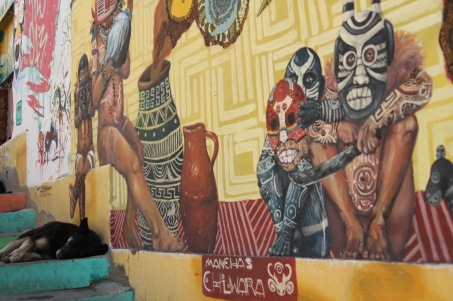
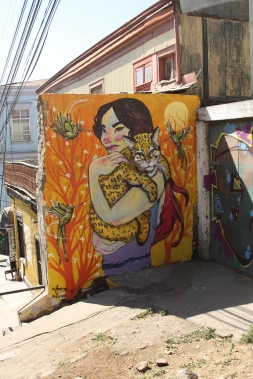
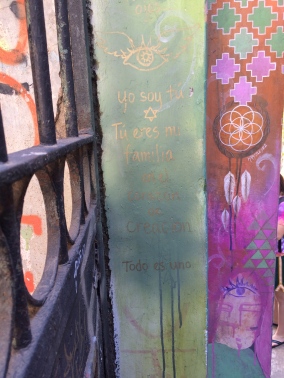
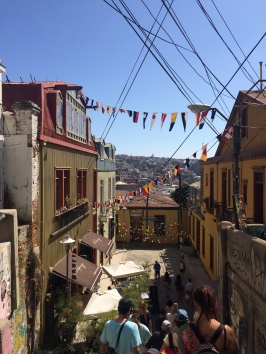
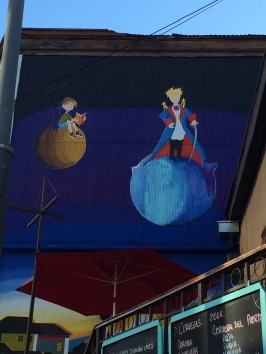
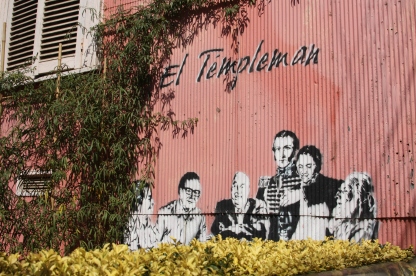
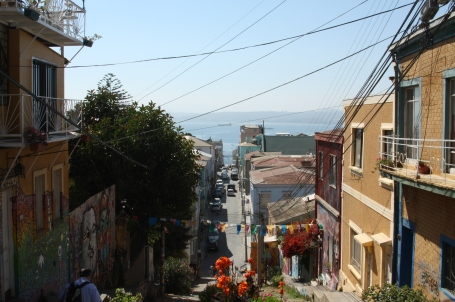
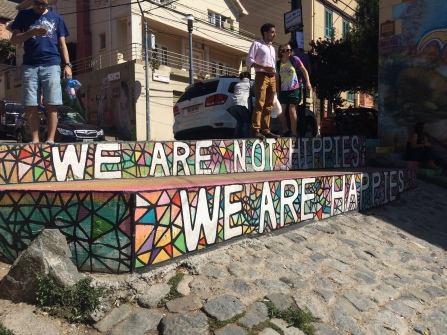
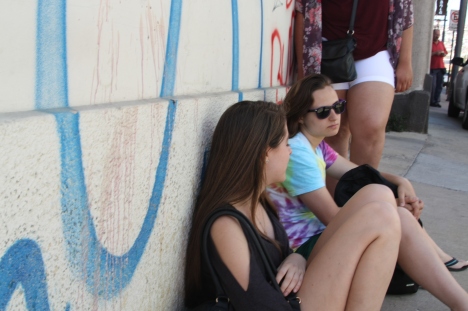
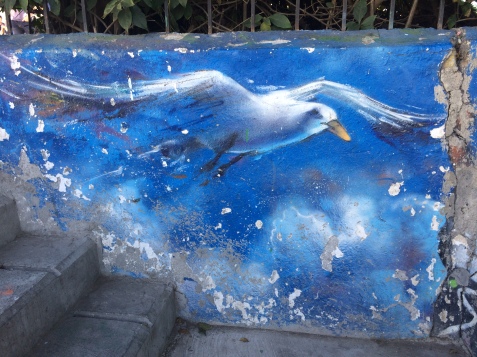
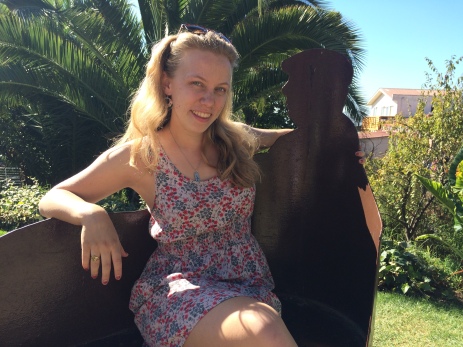

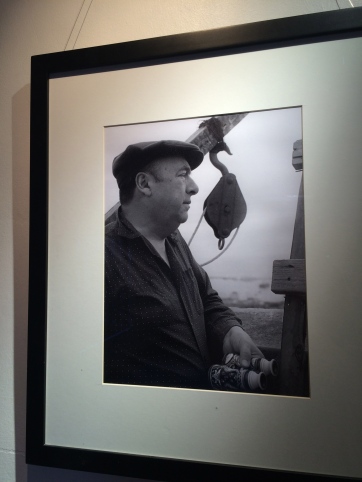
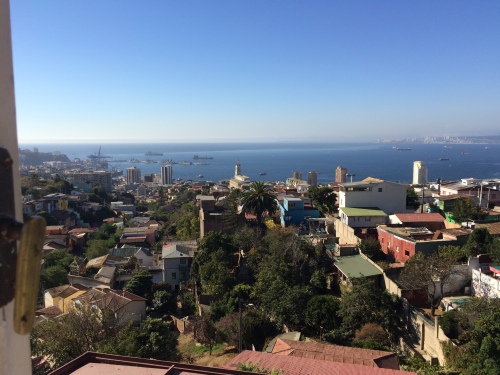
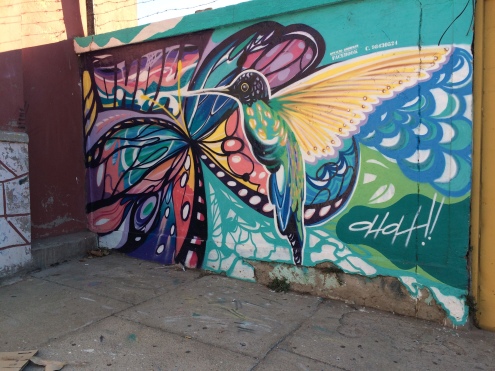
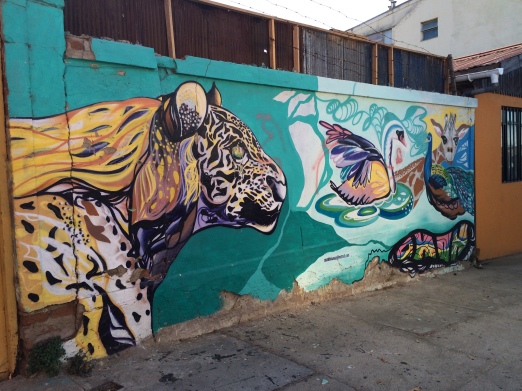
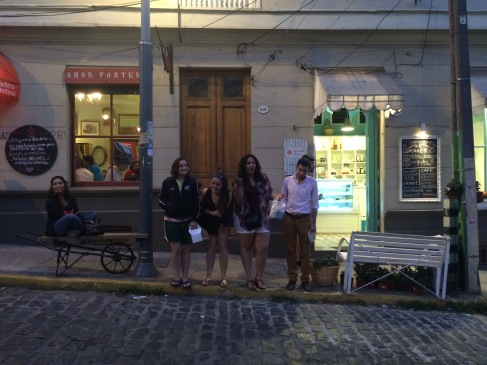
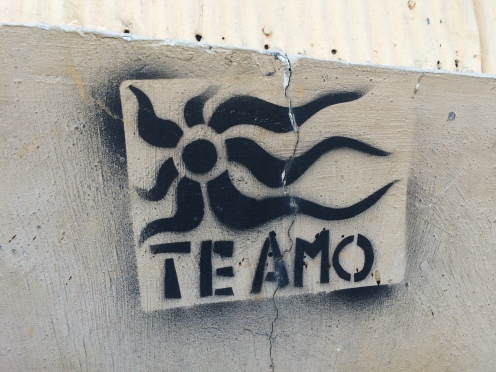
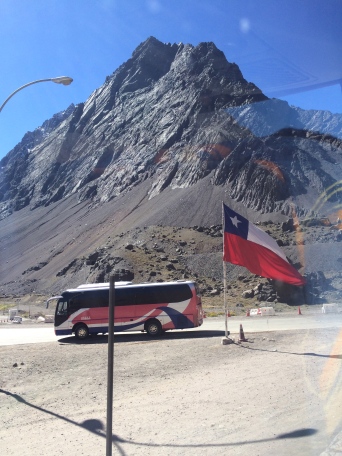
Mairi!
Have you seen Il Postino? It’s a really good film about Neruda in Italy. Is there any memory of Julio Cortazar in Argentina? It’s all Neruda from what I’m seeing. How is the funky-disco-dancing scene down there? You should have pictures of wacky hijinks. You know, like wearing baby masks in public or something of interest for your father.
Is this near you? Defensa 1066 Local 12, San Telmo, Argentina. It’s a clothing designer that does geeky-themed screen printed leggings.
https://www.etsy.com/listing/109996086/galaga-leggings?ref=shop_home_active_1
I read about them once on Boing Boing. It’s probably some horrid neighborhood but it looked kind of cool. …Not that you have school work in a foreign language or anything.
Remy wants to know if you’ve seen an Andean Condor.
Fiona can’t be bothered to say anything right now. It’s because she’s rude!
Peace out,
-Mr. Hill
LikeLike
Bonjour Monsieur Hill!
I have not seen Il Postino, but it has now been officially added to my list.
I’m taking an Argentinian Literature class at the university here, and we will be reading some Julio Cortazar, I am particularly interested in Hopscotch but I think we’ll be focusing on his shorter works. The most important literary figure here in Argentina is Jorge Luis Borges.
It looks like that shop is in Buenos Aires. I’ll be heading to the capital in two weeks, maybe I can stop in!
Tell Remy I did see an Andean Condor, but in Ecuador at the zoo. They’re very elusive birds, and there aren’t too many of them left. Luckily, they are the national figure for a lot of countries surrounding the Andes, so they are being protected.
Hello to Miss Fiona, even though she’s rude! And hello to Anjie as well!
Peace out,
Mairi
LikeLike
Do not listen to Mr. Hill….he is a wine drinking ninny. 😉
LikeLike
Whew, I’m tired! That was a long trip and very descriptive. I especially grew extremely tired along with you on that very delayed bus ride. Congrats to you for keeping your cool. Glad you are living like the locals. Keep safe dear Mairi as you continue to explore the country. Love, Muppy and Pop xx
LikeLike